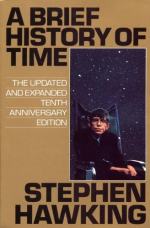|
This section contains 369 words (approx. 1 page at 400 words per page) |

|
Chapter 11 Conclusion Summary and Analysis
Stephen Hawking recaps the major points that he makes in earlier chapters. People are naturally curious about the universe and why we are here, why the universe bothers to exist. Some may be satisfied with an idea like a huge turtle holding up a disk-shaped world, but that idea does not explain what we observe—nobody falls over the edge of the world, which is, in truth, spherical. Theoretical physicists seek better explanations than old mythology.
The early ideas that the universe is deterministic fall apart with the uncertainty principle of quantum mechanics. The general theory of relativity supports the idea of a beginning to the universe, the expansion of the universe, and its eventual collapse back into a singularity or a scattering of black holes. Combining the two theories makes an entirely different overview, one that has...
(read more from the Chapter 11 Conclusion Summary)
|
This section contains 369 words (approx. 1 page at 400 words per page) |

|




